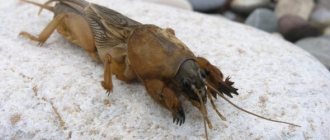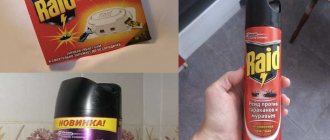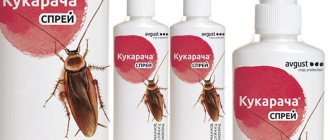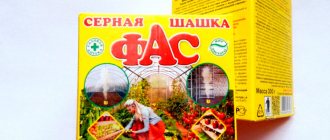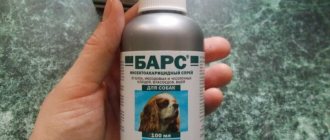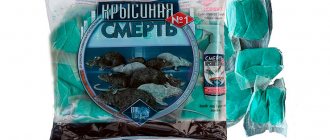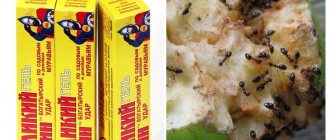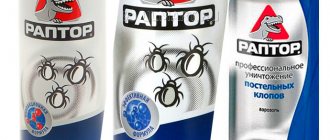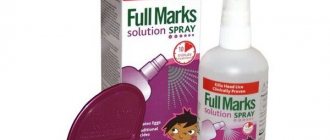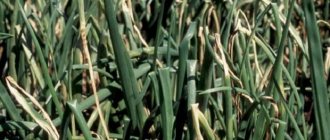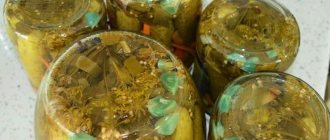Strewn with small elongated insects, the gradually drying twisted tops of shoots and leaf blades are often found in gardens and orchards. These are signs of the appearance of aphids, which are the most common pest that causes serious damage to the harvest of various crops.
Garlic infusions with their strong aroma can repel aphids, ants and other insects
It is important to organize the fight against dangerous insects at the first characteristic signs, since this will allow you to do without chemicals. Often, to make a folk remedy against aphids , which helps get rid of the insect that sucks the juices of plants, garlic is used in different forms.
Infusion
Garlic infusion is prepared in two proven ways, each of which can successfully cope with its task:
- Method one . Without removing the husks, finely chop and mash two large garlic bulbs with a wooden masher. The aromatic gruel is transferred to a saucepan, into which 10 liters of water warmed to 38-40 degrees are poured. A day later, the infusion is decanted using gauze.
- Method two . Peeled medium cloves of garlic (10-12 pieces) are placed in a glass container with a liter of cool water. Keep covered for three days. Strain the infusion into a bucket, where they also add 9 liters of water that has settled in the sun.
Ways to fight aphids using garlic
Features of wrestling
Aphids are spread over the land by black ants. If it has infested crops, it is necessary to inspect the vegetable garden for the presence of anthills. Because pest control is carried out in tandem. Insects are interconnected. To avoid the spread of aphids, you need to destroy the anthill and expel insects from the area. To prevent ants from taking root in the garden, aphids should be exterminated.
If desired, you can always use store-bought ready-made preparations, combining them with garlic. You can also try other folk recipes.
Concentrated solution
To make a concentrated solution, 200 grams of garlic without husks are passed through a press. The pulp is transferred to a jar with a liter of water, warmed to approximately 36-38 degrees. The tightly sealed vessel is kept in a dark cabinet for five days.
The finished concentrate is squeezed through double gauze into a darkened bottle. Before use, 100 ml of garlic preparation is dissolved in five liters of water.
Peeled garlic
Concentrate with soap and oil
Peeled garlic cloves - 6-8 pieces, grind in a mortar or using a press. Mix the gruel in a glass container with 500 ml of cool water. Leave covered in the dark for three days.
After filtering, a teaspoon of liquid soap and twice the volume of sunflower or olive oil are introduced into the infusion with active stirring. Immediately before treatment, 120 ml of the prepared drug must be diluted in 4 liters of water.
Garlic, water, soap and oil are a great way to get rid of aphids once and for all.
With onions and tobacco
Pour 5 liters of water into the pan. Bring the liquid to a boil at low temperature. Pour in 100 grams of tobacco crumbs and add the same volume of crushed onion peels. Simmer the mixture for two hours.
The container removed from the heat is kept under the lid for 50-55 minutes. Add 100 grams of garlic, ground to a pulp, with constant stirring. The broth is filtered through a sieve into a large container and 10 liters of settled water are added.
Since ancient times, garlic has been considered an effective means of combating aphids in the garden.
Garlic peel infusion
Garlic peel is combined in approximately equal proportions with dried leaves of the same spice. Pour 150 grams of the mixture into a ten-liter bucket of warm water. Mix gently and leave in a warm place for 24 hours. The prepared infusion is squeezed through a piece of gauze.
Simultaneously with the destruction of aphids, garlic preparations help get rid of ants on the site, which contribute to the spread of this pest throughout the local area.
Fighting aphids with garlic proves its effectiveness year after year.
You can use young, juicy arrows of garlic. They are collected and tied in the form of a wreath, which is used to wrap the tree trunks below. Some gardeners rub the bark with cut arrows, which repels insects. They are also laid out in tree trunk circles.
It is recommended to irrigate plants affected by aphids with garlic solutions for 3-4 days in a row. Repeat the treatment to consolidate the result after a week. You can hold similar events several times every three days. It is important to repeat spraying after rain.
Author of the article: Kunin Vladimir Filippovich
- Related Posts
- How to get rid of aphids in the garden using folk remedies once and for all
- Valerian will help against cabbage pests: tested by myself
- How to make an alpine slide at your dacha with your own hands (photo)
« Previous entry
Methods of application
Vinegar against aphids
The garlic solution should be poured into a spray bottle with a straw, which ensures that the plants are treated from the bottom up. Aphids are located on the back of plants. If the product is sprayed from above, it does not get under the sheet and flows to the ground.
On a note!
When using a spray bottle, you must turn each leaf and spray thoroughly. This option is more suitable for a small number of plants that need to be saved from aphids.
The old method of watering is a watering can. When using it, the solution consumption is much higher, but the concentration is higher. It is necessary to water each twig and leaf well.
What diseases does garlic help protect vegetable, fruit and berry plants from?
Bioactive compounds of the plant are effective against fungal, bacterial and viral diseases of cultivated plants . According to reviews from experienced summer residents, it is permissible to treat all plants, including trees and shrubs, with infusions and decoctions of garlic against diseases of various etiologies, except for crops belonging to the onion family: onions, garlic, tulips, lilies, wild garlic, etc.
Most often, garlic infusions are used to spray vegetable seedlings against blackleg, rose bushes against powdery mildew and black spot, tomato plantations against late blight and cladosporiosis, potatoes against scab, garden strawberries against various rots, cucumbers and other pumpkin crops against downy mildew, fusarium, root rot, bacteriosis, rust, various spots and mosaics.
Why are aphids so harmful?
Over the course of one season, aphids produce a dozen generations, with one parasite producing several dozen offspring. A large number of aphids appear, which cause irreparable damage to garlic crops. Insects suck the sap, which significantly weakens the plant. Garlic growth slows down and garlic seedlings become susceptible to disease. An increase in the colony leads to inhibition of the affected plants:
- stems are short (dwarf);
- wrinkled leaves.
The leaves and stems of plants are abundantly covered with sweet drops of excrement, the so-called honeydew. Honeydew is an excellent environment for the development of fungal diseases that disfigure plants and impede vital processes. Often the shoots of plants become curved, and the leaves turn yellow, wrinkle and curl. Distorted young shoots wither and dry out. Winged aphids that feed on diseased plants spread viruses over long distances and infect other plants.
This is what aphids look like, which can cause great harm to garlic.
Homemade protective equipment from available raw materials
Some gardeners claim that American Coca-Cola is a good insecticide . If you spray it on an aphid, it dies. This effect is explained by the presence of orthophosphoric acid. This is what insects cannot tolerate.
It is enough to put a removable sprayer on the bottle of drink and spray the plant.
Another recipe for an alternative remedy is a milk solution with iodine .
It is prepared like this:
- 1 liter of water,
- 100 ml milk,
- 0.5 ml iodine solution. It can be measured using a medical syringe.
In addition to using various protective equipment, it is worth engaging assistants from the animal world.
The effect of garlic on pathogenic microorganisms
Why does spraying crops with garlic tincture repel ants, caterpillars, spider mites, and weevils? The reason lies in the characteristic effects of phytoncides and active esters contained in the plant. Most leaf-eating pests cannot tolerate them.
With the help of diallyl sulfide, the “garlic effect” is enhanced. To effectively influence each type of parasite, a certain concentration of the working infusion is selected. The active substances of the plant inhibit the development of pathogenic fungi and bacterial parasites.
Autumn tillage
After harvesting in the autumn, cultivating the crop areas to reduce the number of aphid eggs remaining on the soil surface. Recommended means for autumn tillage against aphids:
| Name of the drug | Active substance |
| A-Cyper 100 EC | alpha-cypermethrin |
| Alciper 100EC | alpha-cypermethrin |
| AlfaCyper 100EC | alpha-cypermethrin |
| Alfastop 100 EC | alpha-cypermethrin |
| Cyper-Fas 100 EC | alpha-cypermethrin |
| Cyperkill Max 500 EC | cypermethrin |
| Cythrin 500 EC | cypermethrin |
| Fastac 100EC | alpha-cypermethrin |
| Fiesta 100EC | alpha-cypermethrin |
| Jetstak 100EC | alpha-cypermethrin |
| Patriot 100EC | deltamethrin |
| Sorcerer 500 EC | cypermethrin |
| Super Cyper 500 EC | cypermethrin |
| Supersect 500 EC | cypermethrin |
| Tak Tak 100 EC | alpha-cypermethrin |
| Tekapo 025 EC | beta-cyfluthrin |
Most insecticides should be applied when air temperatures are above 10C. And at temperatures in the immediate vicinity of 7-8 C°, pyrethroids can work. Organophosphorus preparations are more effective for aphid control. But the optimal temperature for tillage should still exceed 15C.
Numerous Diversity of Aphid Species (Review)
Aphids are one of the most common problems when growing garlic. Aphids (Aphidoidea) are small pests up to several millimeters in length, which vary greatly within the same species. It feeds on plant sap, threatening plants grown at home or in greenhouses and open ground. Aphids reproduce very quickly and produce several generations throughout the year, so the problem is relevant from spring to autumn.
| Types of aphids | Susceptible plants |
| Green peach or greenhouse (tobacco) aphid (Nectarosiphon persicae) | Anthurium, chrysanthemums, freesias, gerberas, carnations, decorative asparagus, violet, lily, snapdragon, peach. |
| Cherry aphid (Myzus cerasi) | cherry |
| Apple aphid (Aphis) | Apple tree |
| Beet aphid (Aphis fabae) | calendula, fava beans, beets, spinach, garlic |
| Ovatomyzus calaminthae | sage |
| Beet aphid (Aphis fabae) | anthurium, chrysanthemum, gerbera, zinnia, tulip, bean. |
| Aphis hederae | ivy |
| Gooseberry aphid (Aphis grossulariae) | gooseberry |
| Cryptomyzus galeopsidis | gooseberries, currants |
| Plum aphid (Hyalopterus pruni) | plum |
| Melon aphid (Aphis gossypii) | chrysanthemum, cyclamen, dieffenbachia, fig tree |
| Cabbage aphid (Brevicorynae) | worthless |
| Macrosiphoniella San - Borni | chrysanthemum |
| Common potato aphid (Aulacorthum solani) | dieffenbachia, freesia, geranium, sepolia, lilies |
| Nectarosiphon ascalonicus | freesia |
| Large potato aphid (Macrosiphum euphorbiae) | greenhouse roses, lilies, tulips |
| Strawberry green aphid (Aphis forbesi) | Strawberry wild-strawberry |
| Pea | peas |
| Iris (Aphis newtoni) | iris |
| Myzodes Ligustri | privet |
| Aphis spiraeophaga | spirea |
Aphids are one of the most harmful insects for cultivated plants.
Tip #1. Herbal additives or chemicals are used to kill aphids.
Aphids are plant pests that colonize almost any agricultural crop. They form numerous colonies, first on the upper part of the plant and then in other parts. Aphids not only damage plants, but also transmit various diseases. These tiny insects are only a few millimeters long with a soft, oval body, sometimes covered with a whitish coating of secretions.
The insect feeds mainly on the tops of shoots and young leaves, where young aphids have easier access to plant sap. The result is inhibition, the garlic stems become deformed and the leaves begin to turn yellow over time. Aphids also spread viral diseases and lead to fungal infections.
Terms of use
The concentrate can be stored in the refrigerator all summer.
Photo: happiness-and-beauty.ru You need to use garlic infusion according to the rules, only in this case will you get the desired effect. Here are 7 important points:
- The aqueous composition is not stored for a long time; plant processing work is carried out within 2–3 hours after preparation. Maximum storage 1 day.
- Spraying with a spray bottle requires careful filtration.
- The composition is distributed over dry foliage - this ensures good adhesion of the soap solution.
- Processing of plantings takes place in the morning/evening, or on a cloudy day.
- To destroy leaf-eating insects, it is necessary to carry out three treatments, with an interval of 3–10 days. For aphids and bedbugs, the procedure is carried out for 3 days in a row, after a week-long pause another spraying is done.
- 5–6 liters of decoction are consumed per 100 m2, 1.5 liters per currant bush, 200–300 ml per raspberry bush, 2 liters per young tree, 7–10 liters per adult tree.
The activities will be beneficial in the initial stage. With a large population covering the entire garden, garlic is powerless.
How to make and use the spray composition - in the video:
